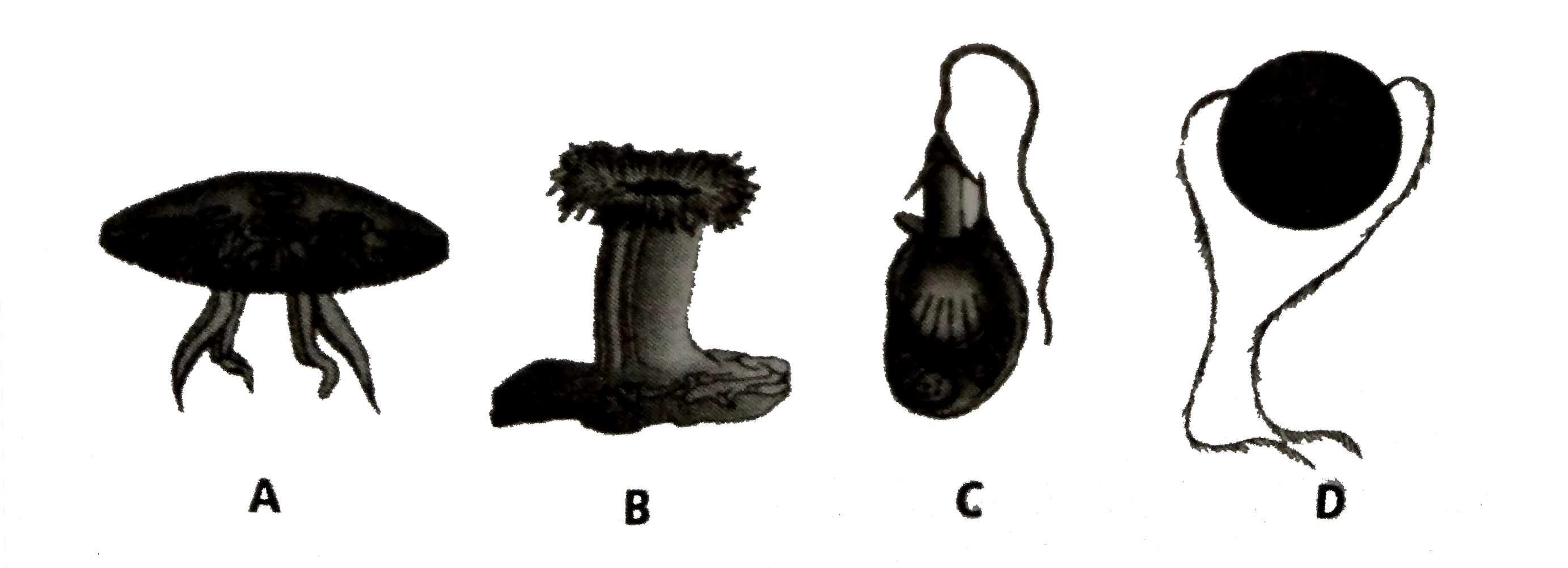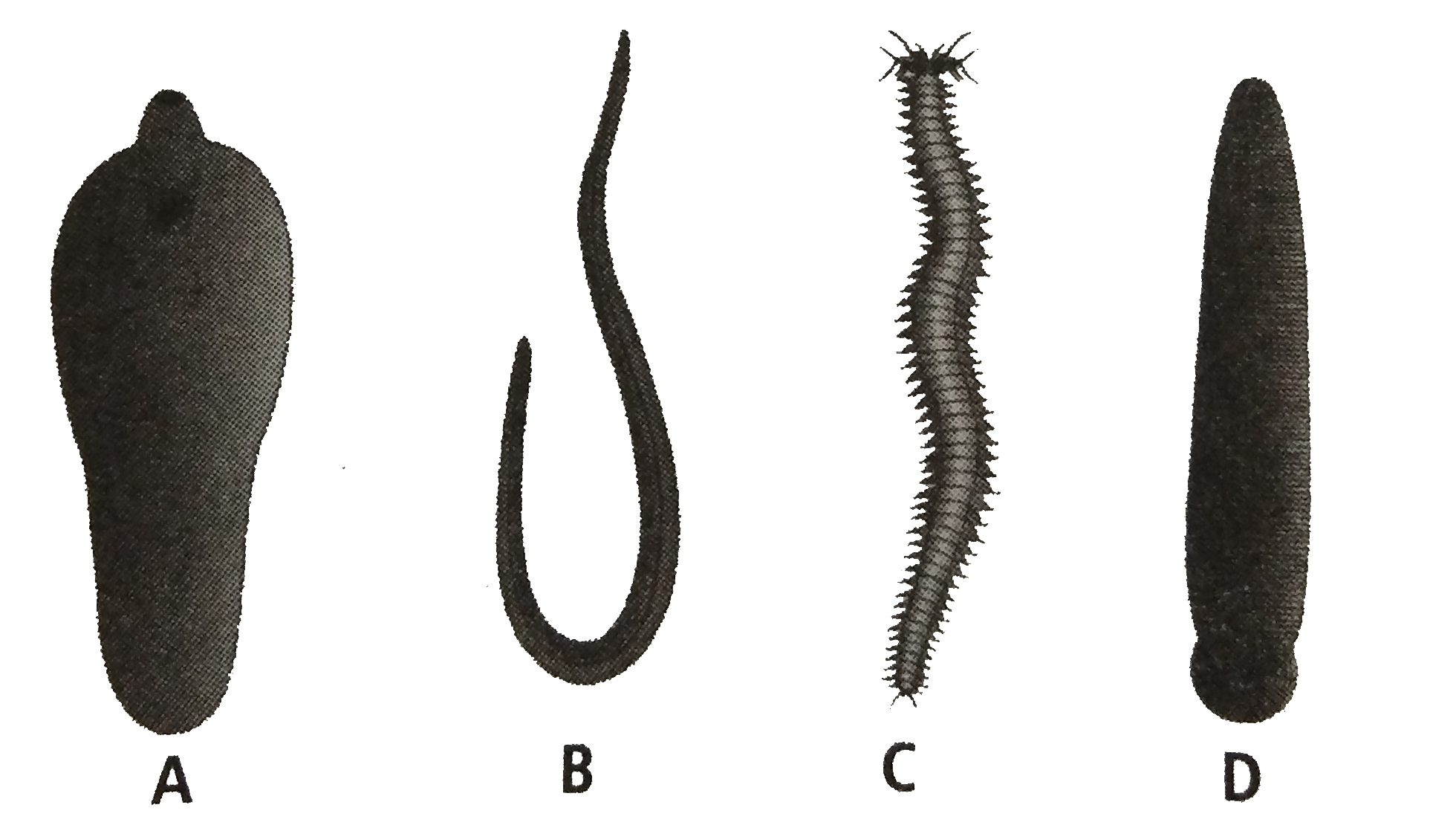The figure given below shows stages in embryogenesis in a typical dicot (Capsella) identify structures A, B, C, and D respectively orWhich option is correct for the region produced from the apical octant (b) and basal octant (d) in Capsella type of embyonic development
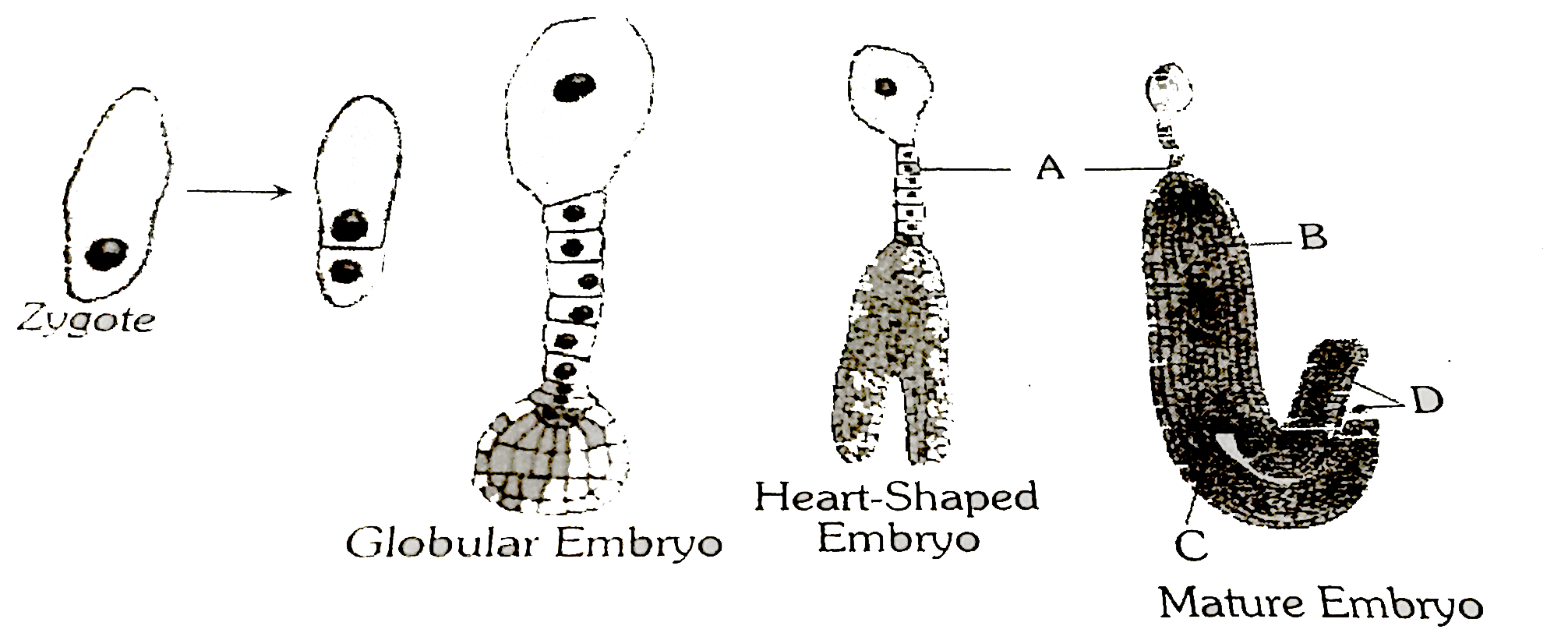
A
Suspensor, Radicle, Plumule, Hypocotyls
B
Suspensor, Plumule, Redicle, Cotyledons
C
Hypopysis, Radicle, Plumule, cotyledons
D
Suspensor, Radicle, Plumule, Cotyledons
Video Solution
Text Solution
The correct Answer is:D
The anterior octant occurs towards the chalazal end. It is called apical octant or chalazal octant. The shoot apex or plumule epicotyl and two cotyledons of embryo will develop from this octant. The posterior octant occurs towards the micropylar end. It is called basal octant towards the micropylar end. It is called basal octant or mictopylar octant. The hypocotyls and the central region of radical of the embryo will develop from this octant.
|
Topper's Solved these Questions
- REPRODUCTION IN ORGANISMSBOOK - ERRORLESS CHAPTER - REPRODUCTION IN ORGANISMSEXERCISE - Reproduction In Organisms
116 Videos
- SMOKING,ALCOHOLISM,DRUG ADDITION, MENTAL HEALTH AND COMMUNITY HEALTHBOOK - ERRORLESS CHAPTER - SMOKING,ALCOHOLISM,DRUG ADDITION, MENTAL HEALTH AND COMMUNITY HEALTHEXERCISE - Smoking,Alcoholism,Drug Addition, Mental Health And Community Health
88 Videos
Similar Questions
Knowledge Check
Diagram given below shows stages in embryogenesis in a typical dicto (Capsella). Identify structures A to D respectively
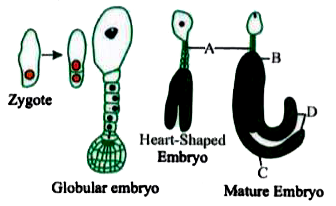 ASuspensor, Radicle, Plumule, CotyledonsBHypophysis, Radicle, Plumule, CotyledonsCSuspensor, Plumule, Radicle, CotyledonsDSuspensor, Radicle, Plumule, Hypocotyle
ASuspensor, Radicle, Plumule, CotyledonsBHypophysis, Radicle, Plumule, CotyledonsCSuspensor, Plumule, Radicle, CotyledonsDSuspensor, Radicle, Plumule, HypocotyleWhich option is correct for the region labelled as a, b, c and d in the given diagram
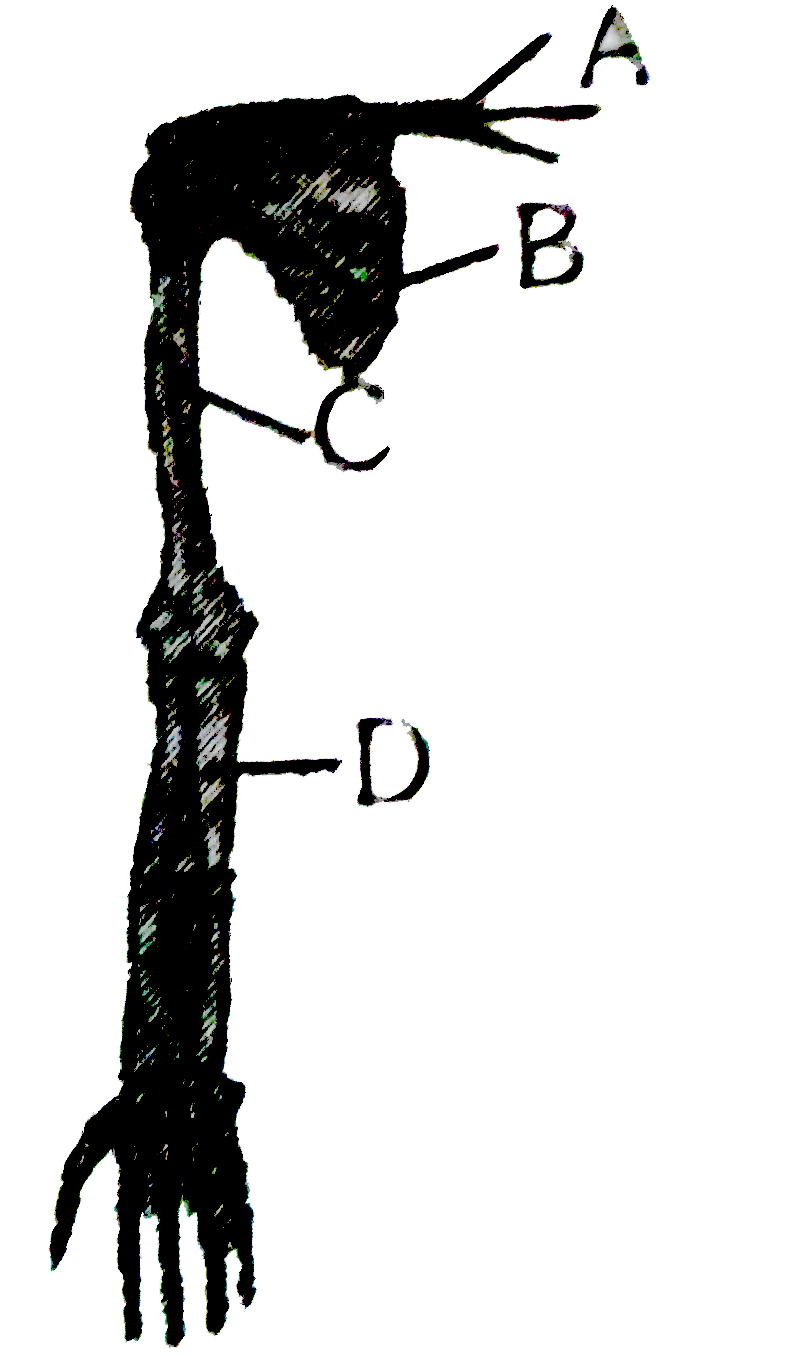 AA-Clavicle, B-Scapula, C-Humerus, D-UlnaBA-Scapula, B-Clavicle, C-Humerus, D-UlnaCA-Clavicle, B-Ulna, C-Radius, D-HumerusDA-Clavicle, B-Glenoid cavity, C-Radius, D-Ulna
AA-Clavicle, B-Scapula, C-Humerus, D-UlnaBA-Scapula, B-Clavicle, C-Humerus, D-UlnaCA-Clavicle, B-Ulna, C-Radius, D-HumerusDA-Clavicle, B-Glenoid cavity, C-Radius, D-UlnaThe following figure is old typical dicot root, Identify A, B, C and D
 AA-Secondary phloem, B- Primary xylem, C-Primary phloem, , D-Vascular cambiumBA-Primary phloem, B-Primary xylem, C- Secondary phloem , D-Vascular cambiumCA- Secondary phloem , B-Vascular cambium, C-Primary phloem, D-Primary xylemDA-Primary phloem, B-Vascular cambium, C-Secondary phloem, D-Primary xylem
AA-Secondary phloem, B- Primary xylem, C-Primary phloem, , D-Vascular cambiumBA-Primary phloem, B-Primary xylem, C- Secondary phloem , D-Vascular cambiumCA- Secondary phloem , B-Vascular cambium, C-Primary phloem, D-Primary xylemDA-Primary phloem, B-Vascular cambium, C-Secondary phloem, D-Primary xylem
Identify the figures A, B ,C and D given below and select the correct option.
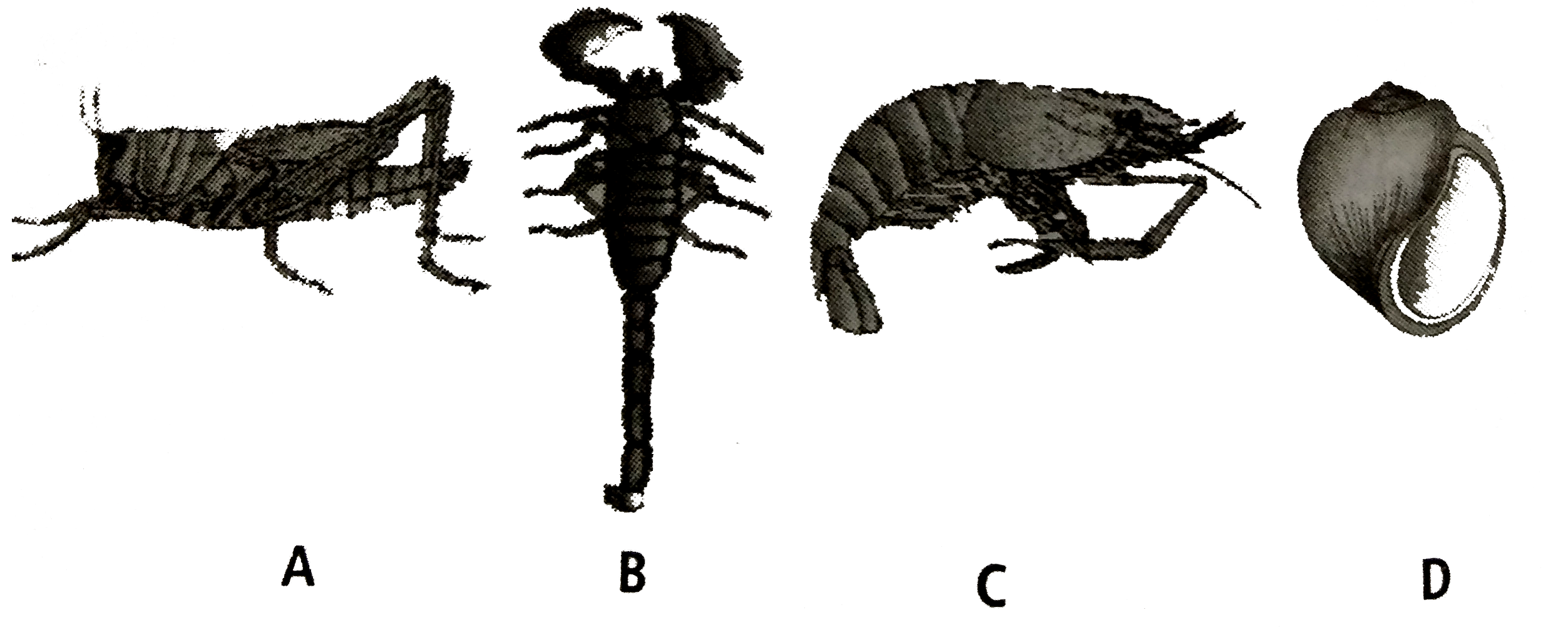
View SolutionThe figure given below shows a flowchart on spermatogenesis. Identify the correct label marked as A,B, C and D.
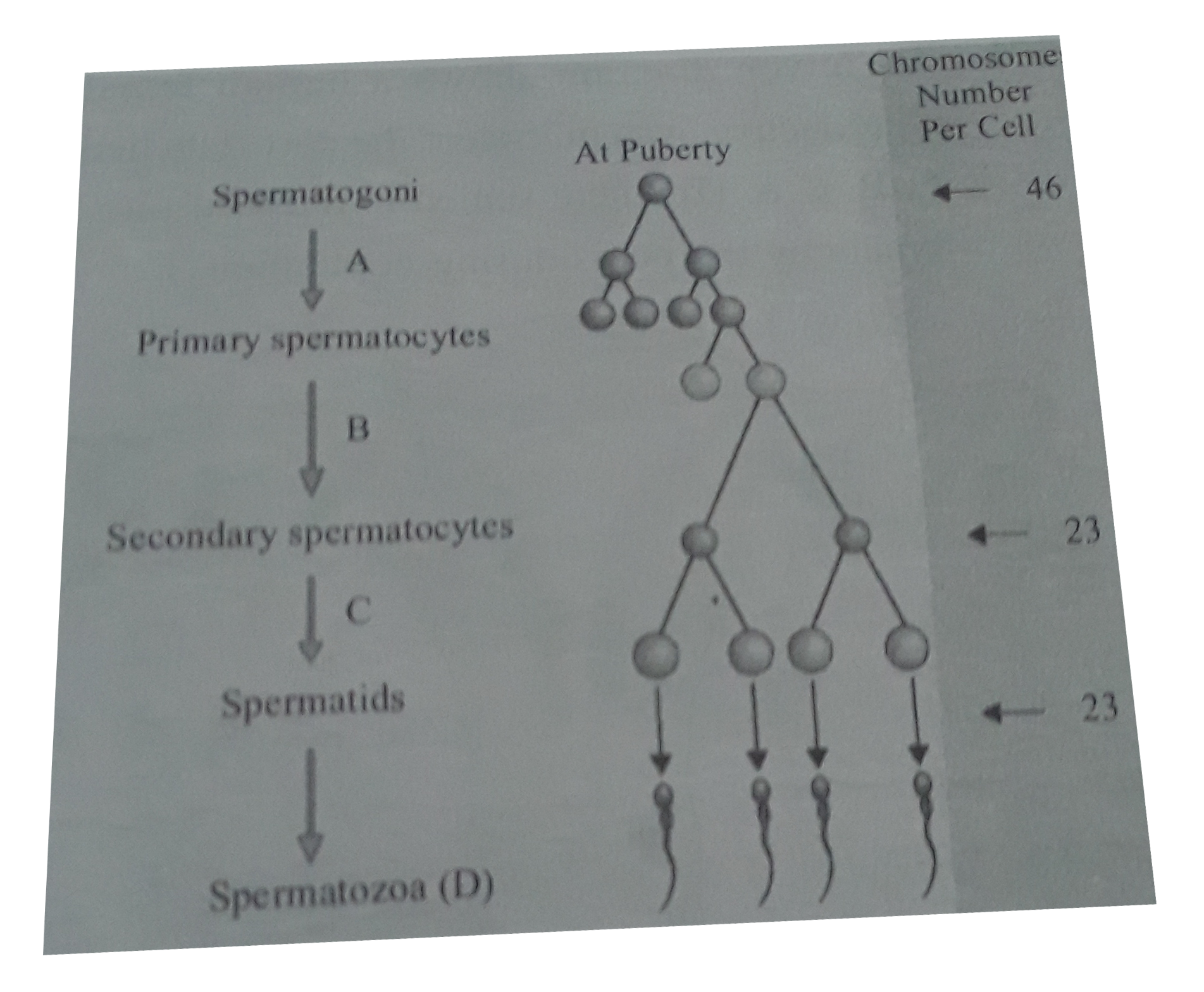
View SolutionIn the given figure , identify A, B , C , D and E respectively.

View SolutionThe given figure shows the human digestive system. Identify A, B, C,D and E respectively
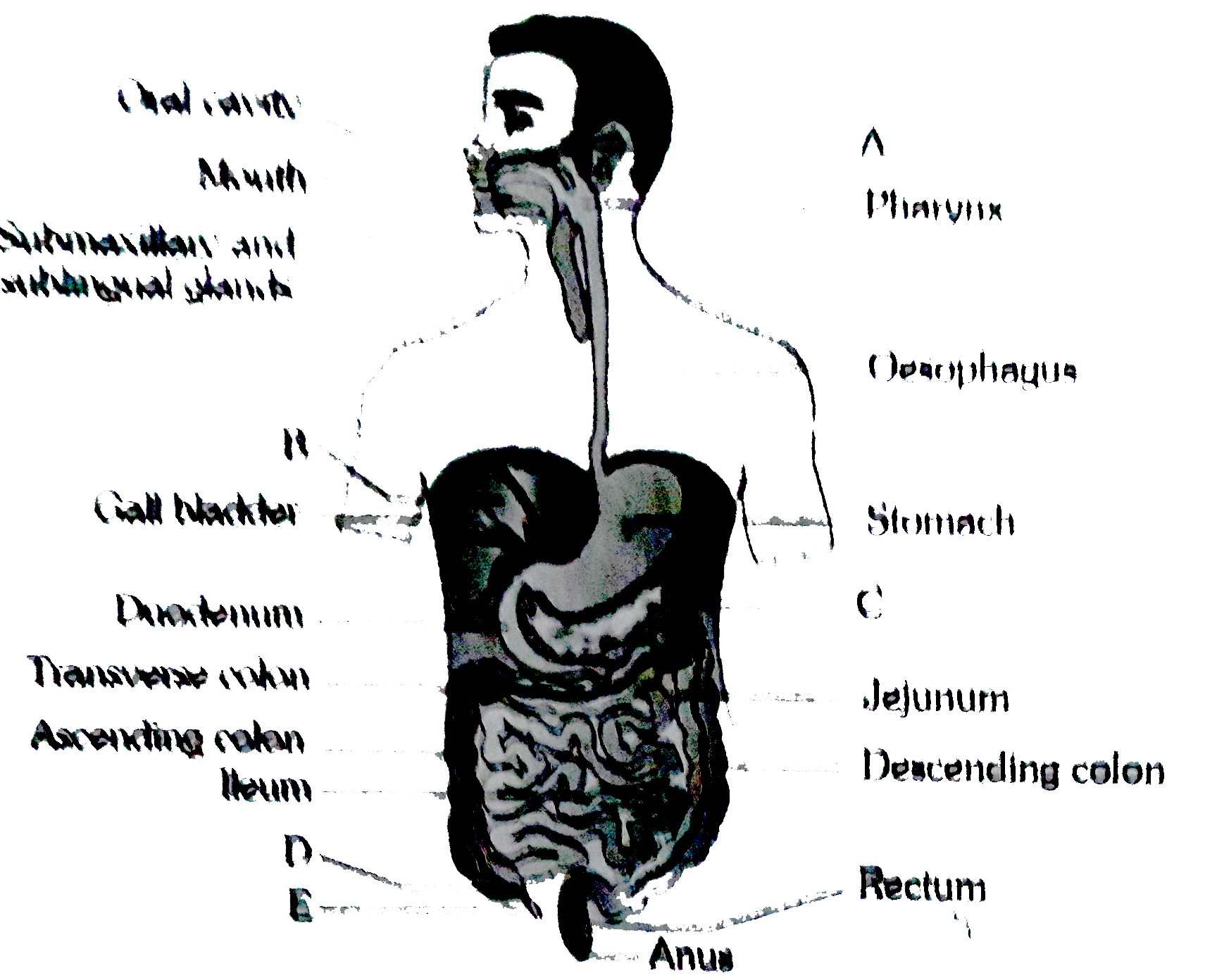
View SolutionExamine the figure (A-D) given below and select the right option out of a-d in which all the four structures A, B, C, and D are identified correctly

View Solution

